Last 20 impoverished counties, banners emerge from poverty in Inner Mongolia
p.china.org.cn by Zhao Binyu,October 19, 2020 Adjust font size:
The last 20 counties and banners that remained poverty-stricken in north China's Inner Mongolia have recently discarded their impoverished statuses, resulting in the country’s first autonomous region established for ethnic minorities fully emerging from poverty.
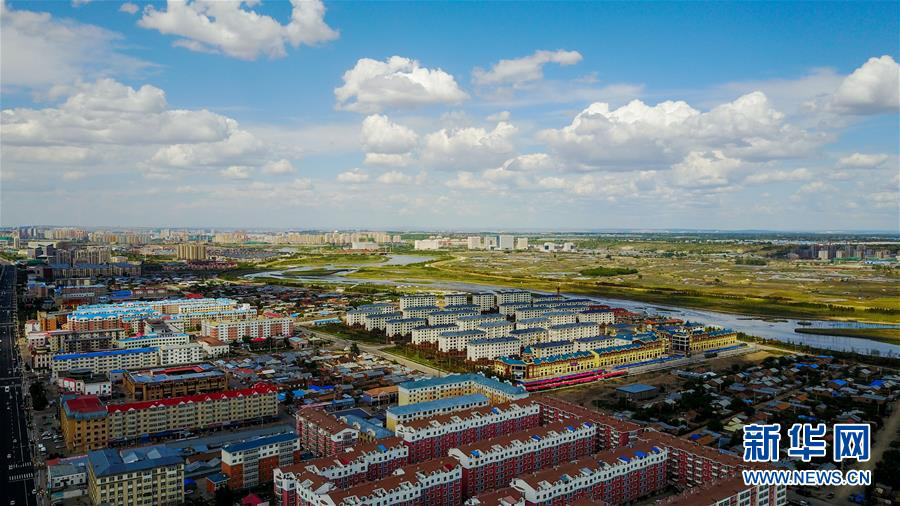
Some of the streets in central Ewenki autonomous banner, Hulun Buir city, Inner Mongolia autonomous region (Xinhua/Lian Zhan)
Inner Mongolia has implemented targeted poverty alleviation policies for impoverished communities across its thousands of hectares of fertile farmland, its vast forest and grassland areas, and the Gobi desert that have increased prosperity and helped people improve their lives. The autonomous region has actively explored new methods of eliminating poverty, counties and banners with appropriate resources have developed green industries, ethnic groups have profited from their cultures and handcrafts, and other tremendous changes have taken place. Locations that were once remote and impoverished have become more connected and more prosperous.
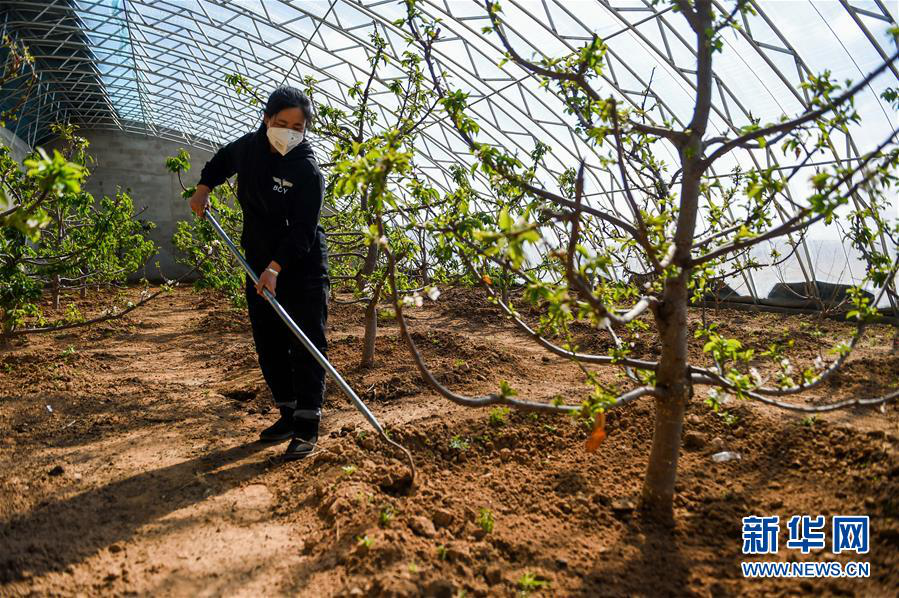
Impoverished Honghaoer Aobao village resident Wang Cuilian hoes weeds around cherry trees in a greenhouse in Sonid Right banner, Xilin Gol league. (Xinhua/Lian Zhen)
Government officials become livestream salesmen in order to help farmers
The earth comes to life in the spring, which is usually the beginning of a prosperous period ahead. This year, however, farmers living in Aohan banner, Chifeng city worried about the millet crop that usually sells well during the Chinese New Year period, because it became overstocked as a result of the sudden COVID-19 outbreak.

A resident of Nandacheng village, Sijiazi town, Aohan banner, Inner Mongolia harvests millet. (Xinhua/Liu Lei)
Yu Junbao, head of the Aohan banner, began using various livestreaming platforms to market the specialty products that are produced in the area to more consumers. More than 700,000 people watched his first broadcast, and six tons of millet were sold in 30 minutes. His efforts brought relief to more than 500 impoverished households in the banner.
E-commerce has become an important way to boost consumption in order to assist Inner Mongolia’s poverty-stricken residents. Livestreaming efforts have been implemented in a timely manner and have proven to be a powerful way of promoting the autonomous region’s traditional agriculture and animal husbandry industries. More and more government officials have been broadcasting online and exploring this new method of addressing poverty.
“Our potatoes are crisp, fragrant and sweet,” Wang Xinyu, deputy mayor of Ulanqab, stated during a livestream in the spring. He provided various information about the crop and ate some potatoes during his presentation. Nearly 120,000 kg of the crop were sold during his broadcast.

A resident of Anye village of Qihao town in Huade county, Ulanqab city, Inner Mongolia makes a broom. (Xinhua/Peng Yuan)
Ulanqab city is located in the formerly poverty-stricken Yan and Taihang mountains region. The area lacks natural resources and is largely barren. The prefecture-level city’s farmers mostly grew potatoes and hulless oats for income, and up to 46.2 percent of the autonomous region’s impoverished population were living in Ulanqab. In recent years, the municipal government has supported the development of characteristic crop and animal farming industries that factor in local conditions, which led to the creation of brands such as “Ulanqab potatoes” and “high-quality Yinshan wheat”. It has also endeavored to help farmers sell their products online to consumers across China.
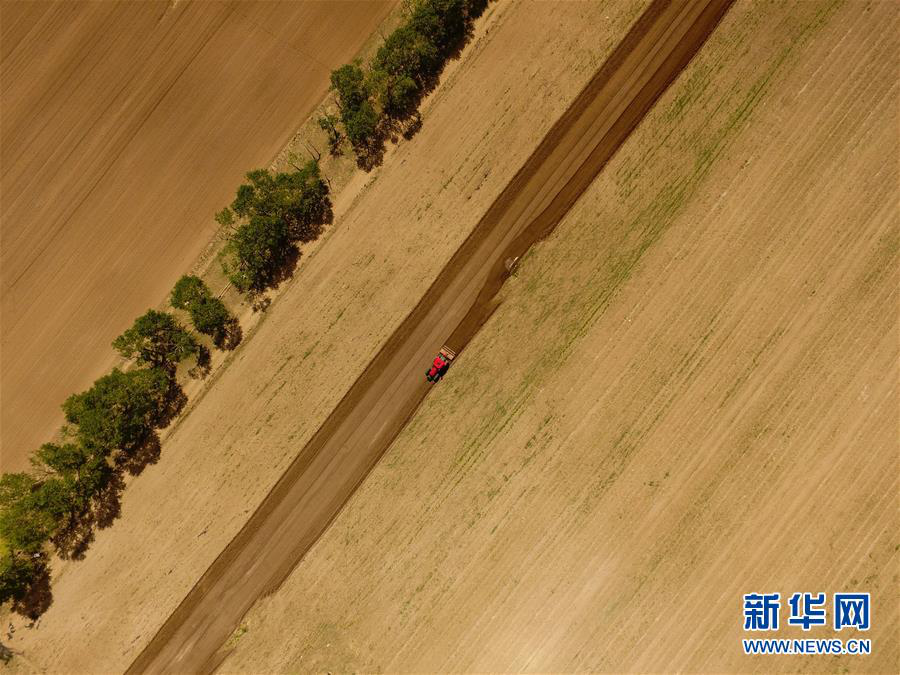
Farmers plant oats in Xinshe village, Huade county, Ulanqab city. (Xinhua/Liu Lei)
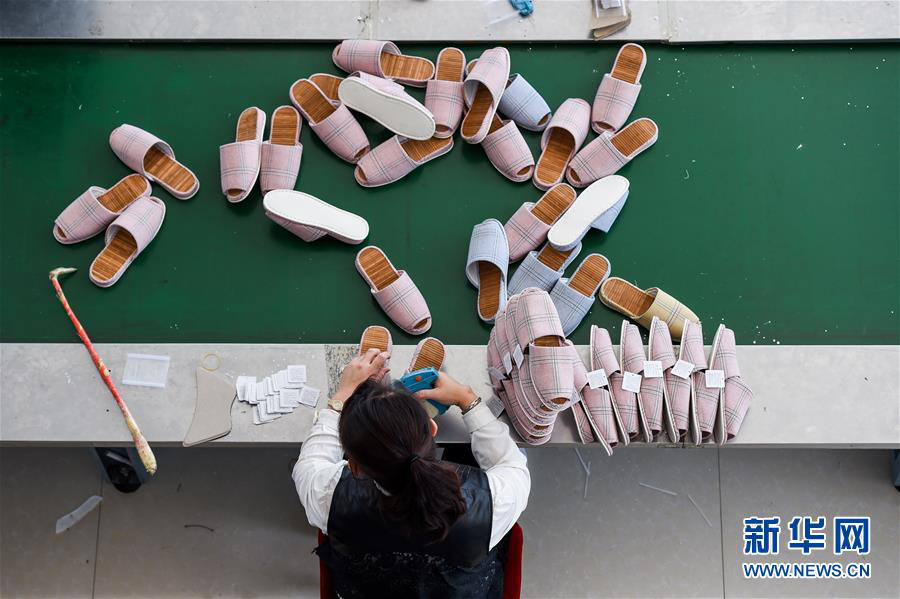
A laborer makes slippers at a factory that was established for poverty reduction purposes in Pingdiquan town, Qahar Youyi Front banner, Ulanqab city. (Xinhua/Lian Zhen)
All seven counties and banners of Ulanqab that were recognized as impoverished at the national level escaped from poverty this year. But the municipal government officials have continued to use livestreaming to promote local products in order to consolidate poverty alleviation achievements and maintain access to a larger market.
Hinggan league's leading officials working at all levels have been marketing the locally produced rice on TV and via live streaming over the past year, which helped to popularize it all over China. More than 2,000 tons of the rice have been sold for more than 10 million yuan (US$1.42 million) thus far.
These kinds of efforts are just a few aspects of Inner Mongolia’s poverty relief campaign. The autonomous region has also funded and promoted industrial development, spearheaded characteristic and advantageous crop and animal farming endeavors, established leading enterprises, supported consumption-related poverty reduction projects, and taken other measures in order to extend and enhance industrial chains to help members of impoverished households achieve sustained, stable income growth. Economic enhancement has made it possible for 402,600 of Inner Mongolia’s residents to escape from poverty since 2016, or 48.9 percent of its total impoverished population.
Traditional culture and craftsmanship help increase incomes
Migemuer, an impoverished resident of Ewenki autonomous banner in Hulun Buir city, is a craftsman working at a local industrial park that is home to workshops producing ethnic arts and crafts. His daily work involves carving intricate patterns on leather belts with a carving knife and a small hammer.
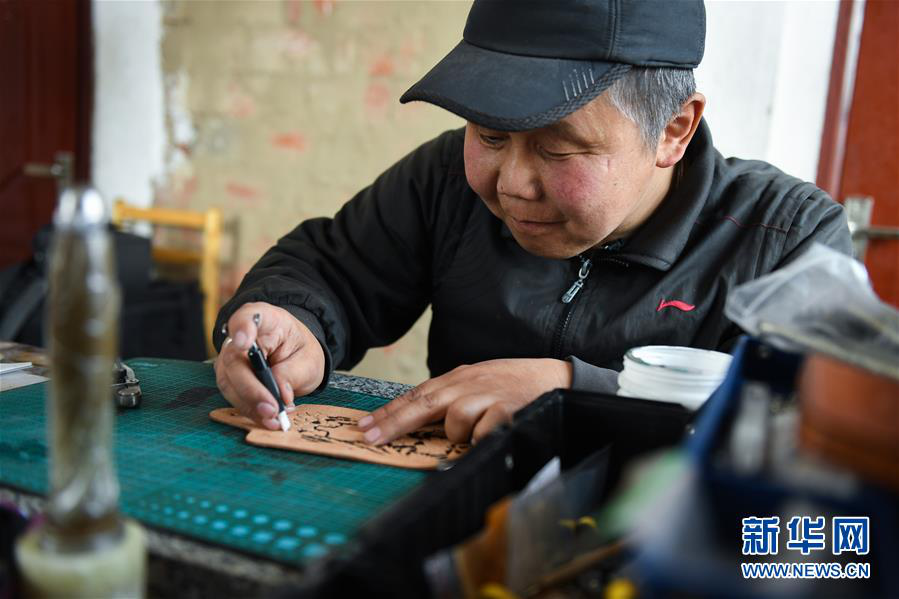
Xinihe town resident Migemuer carves leather at a local workshop in Ewenki autonomous banner. (Xinhua/Liu Lei)
“I participated in a leather carving training program, which made it possible for me to find a new job and escape from poverty,” stated Xinihe town resident Migemuer of Ewenki autonomous banner. The middle-aged man suffers from impairments to his feet and legs and needed a new path forward in life. The employment bureau in his area recommended that he join the program when they became aware of his situation. Migemuer was grateful for the opportunity and began studying the craft diligently. He learned all of the necessary skills and currently earns more than 1,700 yuan (US$242) a month selling belts and other products.
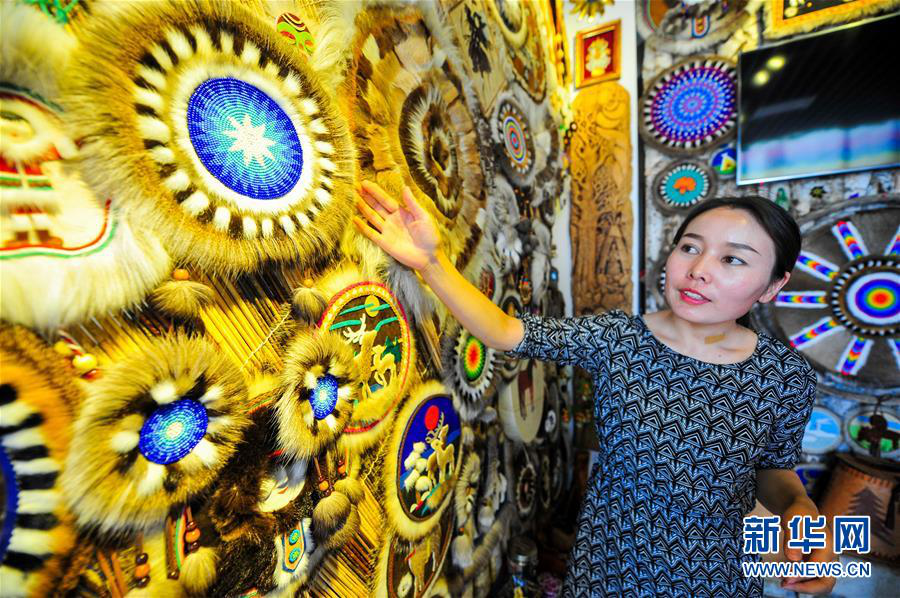
Ewenki autonomous banner resident Wuyunga introduces traditional ethnic “sunflowers.” (Xinhua/Lian Zhen)
New vitality has been injected into traditional ethnic Ewenki arts and crafts in the course of Inner Mongolia’s poverty alleviation campaign. A total of 192 enterprises currently produce local specialty products, such as food, wood carvings, and costumes, at its ethnic industrial park, and members of 300 impoverished households across the banner received special training last year alone.
Traditional ethnic culture has been harnessed in order to increase incomes in many of Inner Mongolia’s impoverished counties, and the Mongolian robes, medicines, brooms, embroidery, and other products that local residents produce have helped them escape from poverty.
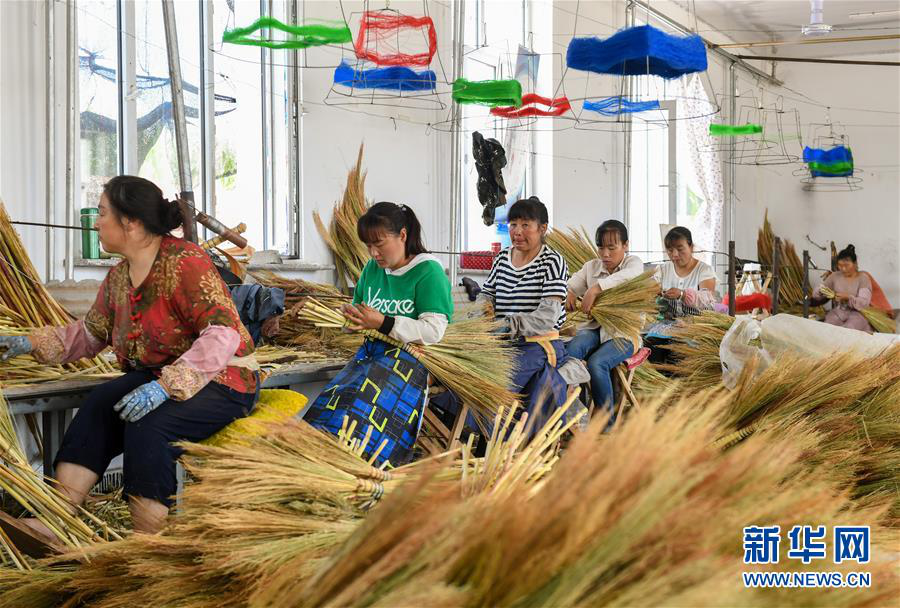
Laborers make brooms at a workshop that was established for poverty reduction purposes in Lindong town, Bairin Left banner, Chifeng city. (Xinhua/Peng Yuan)
“It feels like the sky is falling,” Horqin Youyi Middle banner resident Wang Jinlian uttered in 2012. “How can our family survive?” Her husband was involved in a car accident that year, and the cost of treating him on top of expenses related to their two school-aged children began to become a burden.
Wang’s life began to change in 2016 when her family was identified as impoverished. Horqin Youyi Middle banner was developing traditional Mongolian embroidery from the Qing dynasty (1644-1912) into a poverty eradication industry at that time, and workshops were established to employ local impoverished residents. She soon became involved with the endeavor.
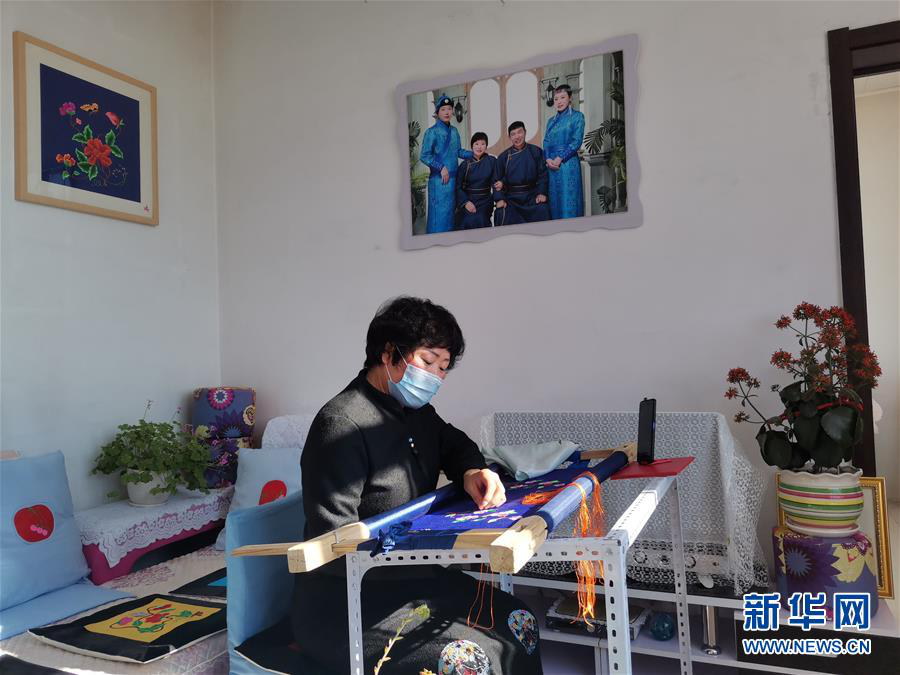
Wang teaches viewers how to embroider via a livestreaming app on her phone at her home in Horqin Youyi Middle banner, Hinggan league. (Bai Junhua/Xinhua)
Wang learned to embroider in 2017. Her first creation was a depiction of a lotus flower that she sold for 50 yuan (US$7.12). She became confident about her abilities and actively participated in a special training program. The Horqin Youyi Middle banner native gradually improved her skills and received more and more orders from poverty alleviation workshops.
Wang earned more than 20,000 yuan (US$2,850) from her embroidery in 2019, which made it possible for her family to finally escape from poverty. A total of 20,000 residents of more than 170 villages in the banner are currently involved in the industry. About 3,000 of them were impoverished, and now their income increase by 2,000 yuan (US$285) a year on an average.
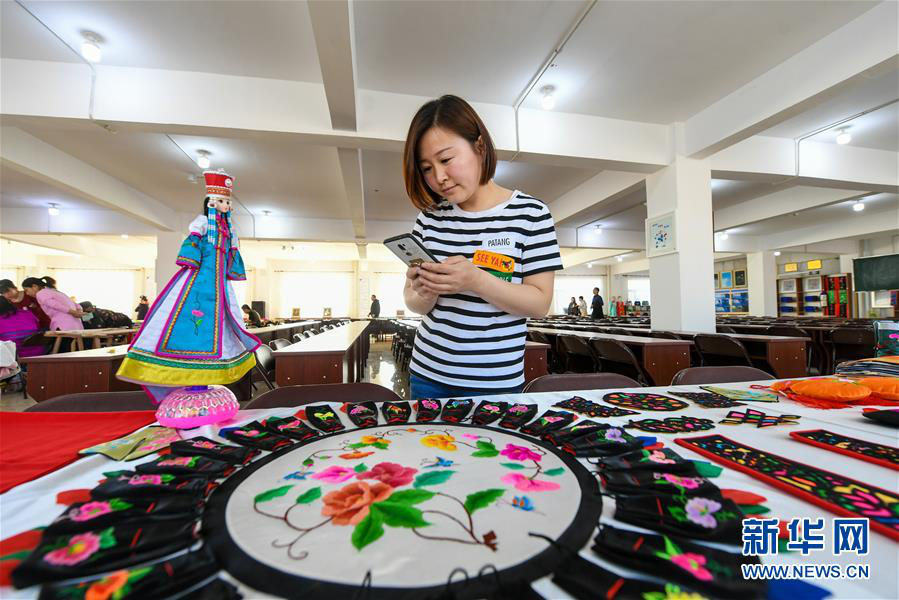
A visitor takes photos at a handicraft exhibition area at a workshop that was established for poverty relief purposes in Horqin Youyi Middle banner, Hinggan league. (Xinhua/Peng Yuan)
Many localities in Inner Mongolia have promoted the intensive, large-scale, and innovative development of industries related to ethnic culture in order to engage in targeted poverty eradication and rural revitalization. Cooperatives have been established, and private enterprises have also become involved in the undertaking. Impoverished residents have received payments for transferring their land use rights, are issued dividends from cooperatives that they are members of, and obtain salaries for their labor.
High-speed rail helps connect Inner Mongolia and Beijing
“This is a big change!” impoverished resident Liu Taiping recently noted delightfully. “It only takes two hours to get to Beijing on the new high-speed train now. My family plans to visit the Summer Palace and the Palace Museum when the COVID-19 pandemic is over.” The Lius now live east of Hohhot near Zhuozishan railway station and were poverty-stricken not long ago. The area has experienced significant positive changes after nearly 100 years of vicissitudes.
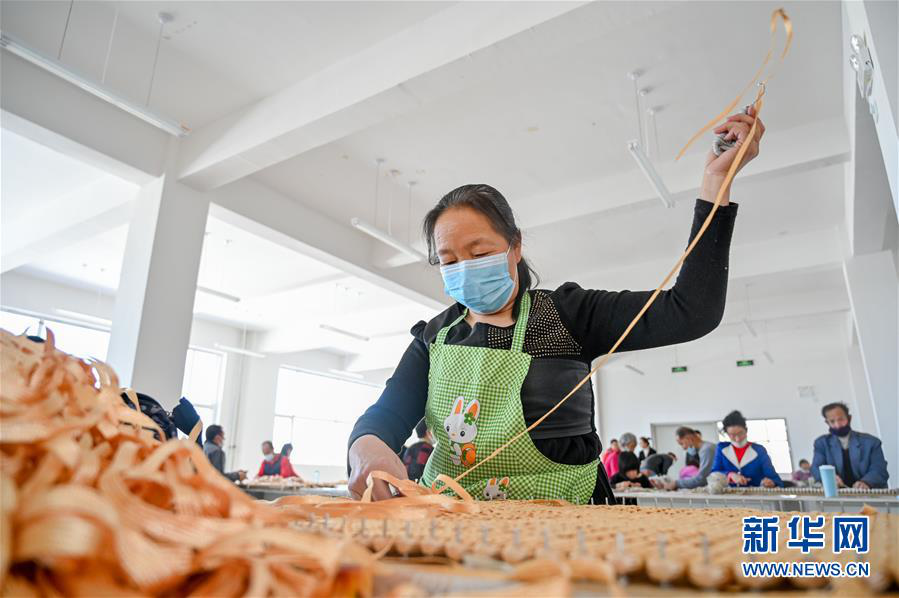
Impoverished residents of Fu’an community in Zhuozi county, Ulanqab city weave seat cushions at a local workshop that was established for poverty alleviation purposes. (Xinhua/Lian Zhen)
Prior to relocating to the present resettlement community in Zhuozi, Liu Taiping and his poliomyelitis-stricken wife and their young daughter lived in Hadatu village, Bayinxile town. It is an area with deep ravines, inconvenient transportation, dilapidated homes, and few permanent residents. “It was up to me to farm crops and livestock on my own,” Liu explained when asked about his life in the past. “I only earned 2,000 to 3,000 yuan (US$285 to US$428) a year. My life was hard, and I didn’t have much to look forward to.”
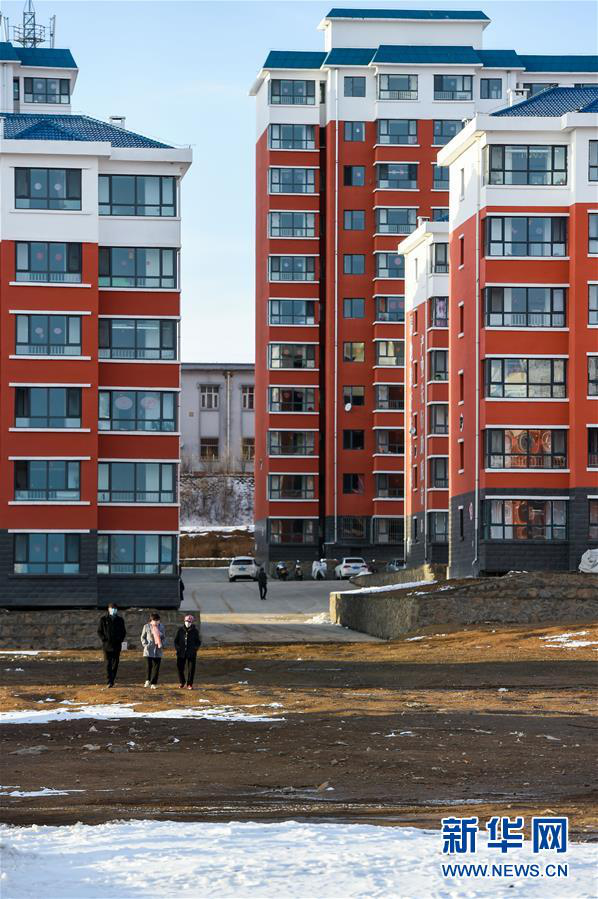
Residents of the Fu’an community in Zhuozi county, Ulanqab city take a walk in the area. The community was built as a resettlement site for poverty-stricken villagers. (Xinhua/Lian Zhen)
The Lius had the opportunity to participate in a poverty elimination relocation program in 2018 and resettled at Zhuozishan town’s Fuxiang community. The government also arranged a stable public janitorial job for him to augment the car cushion work that the couple engages in. “My wife and I can usually make ten or more seat cushions a month at a factory that was established for poverty reduction purposes, earning about 2,000 yuan (US$285) a month,” Liu said. He also mentioned that his daughter now attends school in the town and that he never thought his family would live the kind of lives that they are currently living.
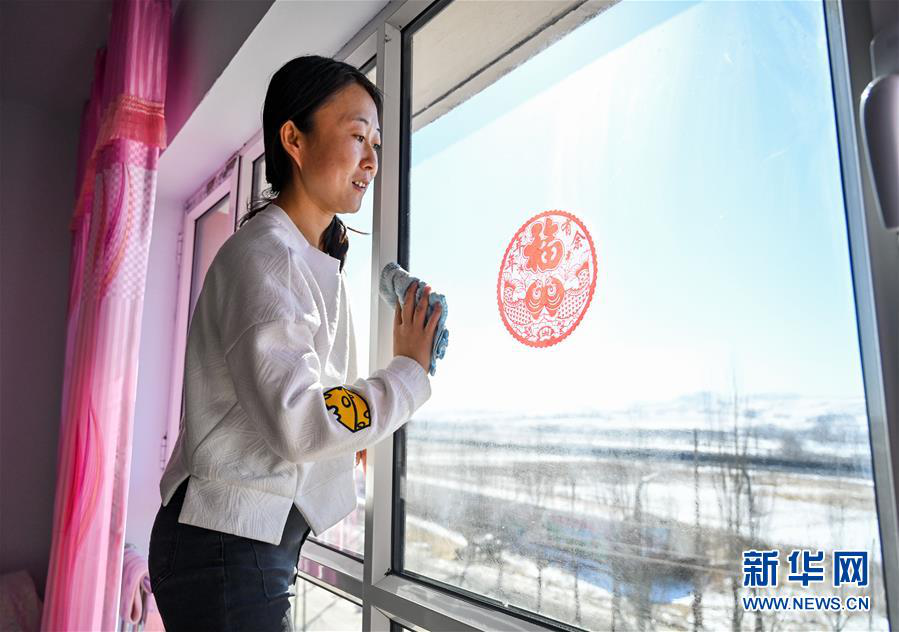
University senior Wang Qing cleans windows of her home in the Fu’an community in Zhuozi county, Ulanqab city. (Xinhua/Lian Zhen)
Factories that produce baskets, clothing, and other products were established in each of Zhuozi county’s relocation sites for poverty alleviation purposes. More than 2,800 impoverished families now live stable lives in new areas and have gained steady employment.
More investors have come to visit Zhuozi or invested in the area in recent years, especially since the county’s high-speed rail connection became available. Young people who left their hometowns in order to work in other areas also began returning home more frequently. Construction and expansion of labor-intensive factories are currently underway in the county in order to create more jobs for local residents.
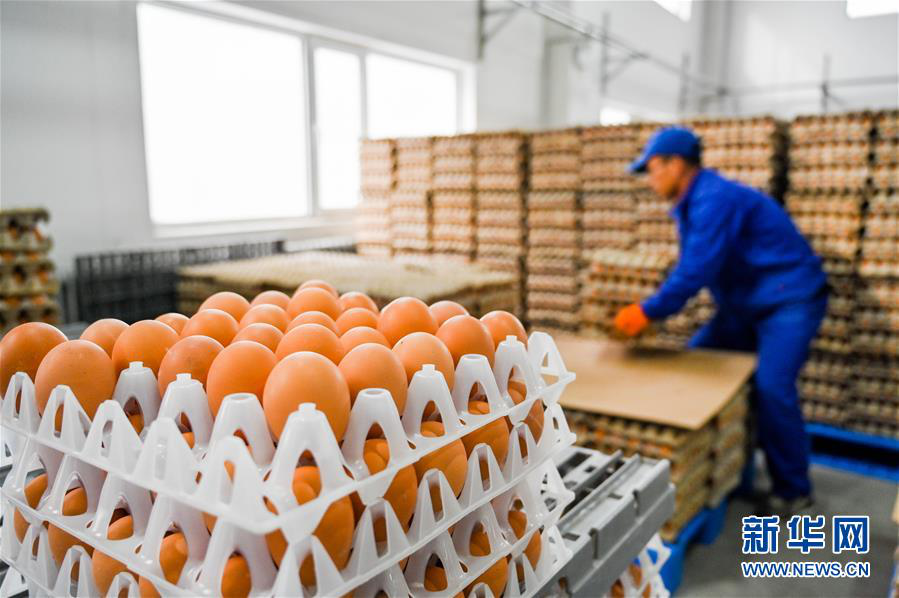
A laborer sorts eggs at a factory in an industrial park in Shibatai town, Zhuozi county, Ulanqab city. (Xinhua/Lian Zhen)
Ulanhot city is located at the southern foothills of the Greater Hinggan mountains. The underdeveloped industry and lack of qualified talent in its rural areas impeded poverty alleviation efforts until relatively recently.
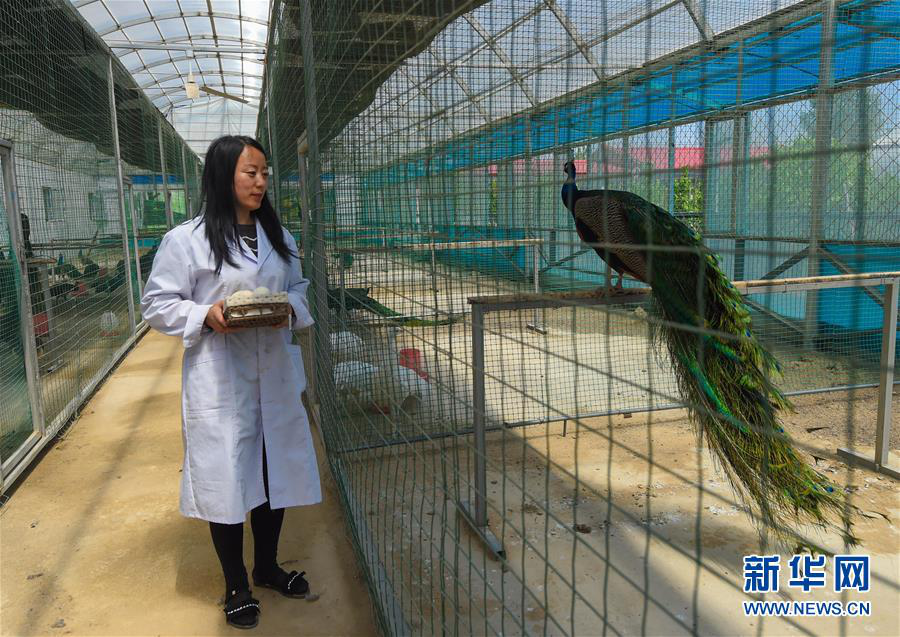
Zhou Hainan tends to a peacock at the Mengque animal husbandry cooperative in Yilelite town, Ulanhot city, Hinggan league. Some households in the area have been able to escape from poverty by participating in the industry. (Xinhua/Peng Yuan)
Ulanhot has been harnessing its beautiful environments, quiet rural regions, high-quality crops, and other advantageous resources for poverty reduction purposes. Local governments have developed and marketed projects that involve paddy fields, peacock parks, handicraft exhibitions, and other undertakings that have attracted many tourists and businesspeople. The city’s rural areas have come a long way and no longer feel backward or remote.
Inner Mongolia’s poverty incidence rate dropped from 11.7 percent at the end of 2013 to 0.11 percent at present. All of its 3,694 villages that used to be impoverished are no longer in poverty. The region has been opening its arms to enterprises from outside the region and encouraging them to invest in its borders. More and more natives that had been living in other areas have returned to their hometowns in order to start new businesses as transportation has gradually improved.
Creating a moderately and comprehensively prosperous society is not easy, and the battle has yet to be won. Sixteen thousand of Inner Mongolia’s residents still live in poverty at present. Government bodies at all levels are implementing targeted industrial development measures in order to ensure that employment opportunities are available for every impoverished citizen that has the ability to work. Poverty-stricken people with poor labor capacity are encouraged to engage in small-scale crop and livestock farming endeavors, participate in courtyard business activities, and apply for public welfare jobs. Those who are unable to work are able to receive asset income payments and benefit from social security programs.